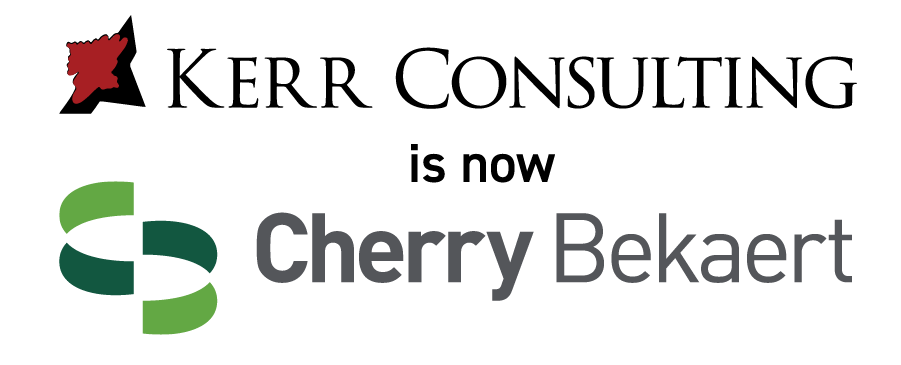Unlocking the Benefits: Average ROI on Moving to Cloud-Based Software Solutions
Understanding ROI When Moving to a Cloud Solution

In the digital age, businesses are increasingly recognizing the need to adopt cloud-based software solutions to stay competitive and efficient. Moving to the cloud is not just about keeping up with technological trends; it’s about leveraging a platform that offers substantial returns on investment (ROI). This blog post will delve into the average ROI businesses can expect when transitioning to cloud-based software solutions, highlighting key benefits and considerations.
Understanding Cloud-Based Software Solutions
The term “cloud” gets used and thrown around a lot. To make it more confusing, some software vendors use the term “cloud-based solution” to refer to hosted solutions. Hosted software solutions involve hosting software applications on remote servers, which can be accessed via the internet. This approach contrasts with traditional on-premise software, where applications are hosted on local servers or personal computers. While you can access hosted solutions via the “cloud” (or, internet), this is technically a “hybrid-cloud” solution.
The Difference between True SaaS Cloud, Hybrid-Cloud, and Hosted Solutions
True cloud solutions use platform services like Amazon Web Services, Microsoft Azure, and others to natively build their SaaS solution. The reason for this is that a true cloud solution, unlike a hosted solution, can be scaled up or down when usage needs more demand. A hosted solution capabilities are limited to the computer or virtual machine that is running the software.
Another advantage of a true cloud solution (like Sage Intacct) is that upgrades, backups and integrations are much more seamless. In a true cloud environment, it’s possible to upgrade all users to the latest version in the background. Additionally, the system doesn’t need to be taken down for backups, and security measures are better. To sum it up:
- True SaaS Cloud Solution: Managed and maintained by the service provider, multi-tenant, subscription-based, highly scalable and accessible via the internet.
- Hybrid Cloud Solution: Combines on-premises, private cloud, and public cloud, offering flexibility and optimization of existing infrastructure, but with added complexity.
- Hosted Solution: Software hosted by a third-party provider, typically single-tenant, offers more control and customization, but with the customer often managing the application itself.
Each model has its own advantages and use cases, with true SaaS being ideal for simplicity and scalability, hybrid cloud for flexibility and resource optimization, and hosted solutions for control and customization.
Key Benefits of Cloud-Based Software Solutions
Before diving into the ROI, it’s essential to understand the primary benefits that cloud-based solutions offer:
- Cost Savings: Reduced need for physical infrastructure and maintenance.
- Scalability: Easily adjust resources based on demand.
- Accessibility: Access data and applications from anywhere, at any time.
- Security: Enhanced security features and regular updates.
- Disaster Recovery: Improved disaster recovery options to safeguard data.
Calculating ROI on Cloud-Based Software Solutions
The ROI on cloud-based software solutions can be calculated by comparing the benefits gained from the cloud investment against the costs incurred. Here are some key factors to consider:
1. Cost Savings
- Initial Investment: Cloud solutions typically require a lower initial investment compared to on-premise systems, which need significant capital expenditure on hardware and software licenses. While ERP systems will almost always require someone to help configure and set them up, after this phase is complete, the system works as expected without requiring as much support as in the past.
- Operational Costs: Ongoing costs such as power, cooling, and maintenance for physical servers are eliminated. Additionally, many cloud providers offer a pay-as-you-go pricing model, allowing businesses to pay only for the resources they use. Many businesses love this, because it means they can save the cost of IT personnel and replacing server hardware every 3-5 years.
- Personnel Costs: Reduced need for in-house IT staff to manage and maintain infrastructure, leading to significant savings in salaries and training. While you might thing that IT personnel would be eliminated, there are usually other areas these technical people can focus on that are more valuable to the business.
2. Increased Productivity
- Accessibility: Employees can access cloud applications from any location, facilitating remote work and improving productivity. Because cloud applications are the “latest and greatest”, they are often easier to use and navigate, and they operate in a browser, on any device, as long as you have internet access.
- Collaboration: Cloud solutions often include collaboration tools that enable teams to work together seamlessly, regardless of geographical location. ERP systems like Sage Intacct actually allow you to communicate about transactions right in the system, instead of in email where they might get overlooked. Documents, comments and other communications are included as part of the system.
- Updates and Maintenance: Automatic software updates ensure that employees are always using the latest versions, reducing downtime and improving efficiency. Sage Intacct updates each quarter, and there are continually new features being added. And because these updates are tested extensively before roll-out, updates are usually seamless.
3. Business Agility
- Scalability: Cloud solutions can easily scale up or down based on business needs, allowing companies to respond quickly to market changes. Because a cloud solution is hosted on platforms that are built to handle trillions of transactions, small and medium businesses rest easy knowing they can transact as much as needed.
- Innovation: Access to the latest technologies and tools enables businesses to innovate and stay ahead of competitors. Cloud solutions are generally easier to connect to other systems, and to modify and configure.
Average ROI Metrics: How much can I save using a SaaS solution?
Research indicates that businesses moving to cloud-based solutions can experience significant ROI. Here are some statistics that highlight the potential benefits:
- Cost Reduction: Studies show that businesses can save up to 30% on IT costs by moving to the cloud. This includes savings on hardware, maintenance, and energy costs. Depending on the number of servers and IT personnel currently on staff, this savings can be significant.
- Productivity Gains: Companies have reported a 20% increase in employee productivity due to improved accessibility and collaboration tools. Because these systems can usually be connected to each other, modern solutions finally allow a business to have a “whole business” solution, instead of extracting and transforming data from several systems to get a complete picture. How much time do you spend running and combining report data, or entering data in more than one place?
- Revenue Growth: Cloud adopters often see a revenue boost of 10-15%, driven by increased agility and faster time-to-market for new products and services. If you believe your organization is inefficient, a cloud solution will allow you to save time and labor, which will allow you to focus on more profit-generating activities.
- Time Savings: By automating routine tasks and streamlining workflows, businesses can save up to 40% of the time previously spent on manual processes. Data entry is reduced, running reports can be automated and displayed on a dashboard, or sent on a schedule. Automatic bank feeds and expense management, and AI-powered reconciliation, AP invoicing, OCR recognition and payment automation, and GL outlier detection are all features in Sage Intacct that save significant time for our clients.
Kerr Consulting
Kerr Consulting specializes in guiding businesses through the transition to cloud-based software solutions, such as Sage Intacct, ensuring a smooth migration with minimal disruption. Their expertise not only accelerates your ROI but also enhances your business’s agility, security, and scalability, making cloud adoption a strategic advantage.
Discover the ROI of cloud-based software with Kerr Consulting and Sage Intacct.
Contact us today to start your journey toward a more agile and efficient business operation!
Case Studies for Companies Who Have Moved to Cloud Solutions
Example 1: Retail Industry
A mid-sized retail company transitioned to a cloud-based inventory management system. The move resulted in a 25% reduction in operational costs and a 15% increase in sales due to better inventory tracking and management. The overall ROI was calculated at 35% within the first year. Better inventory control resulted in more accurate costing data, better GAAP compliance, and better sales and inventory movement data for the leadership team.
Example 2: Healthcare Sector
A healthcare provider implemented a cloud-based electronic health record (EHR) system. This transition reduced the time spent on data entry by 30%, allowing healthcare professionals to focus more on patient care. The ROI for this investment was estimated at 40% over two years, factoring in cost savings and productivity gains. This client was able to use a cloud solution to connect systems that, in the past, were manually reconciled via manual imports and exports, manual data entry, and lots of time in Excel.
Challenges and Considerations When Moving to Cloud Solutions
While the benefits of moving to the cloud are compelling, businesses must also consider potential challenges:
- Status Quo: Is your organization ready to change? The #1 reason we see for lack of progress with companies looking to modernize their system is a lack of alignment between the people doing the work and company leadership. Make sure everyone is ready for change, and bought in.
- You Don’t Know What You Don’t Know: Evaluating a new system can be cumbersome and tricky. For this reason, many people love our Business Process Review. This service documents your current state, including your tech stack, workflows, threats and challenges, and provides a recommendation for how to move forward. 100% of the investment in this service will credit back to your implementation. It’s a great way to align the organization, and reduce or eliminate the risk of a software migration.
- There are many solutions: There are many solutions out there. Some bill themselves as “cloud” when they are not, some are true cloud. We can help you determine the right path.
- Data Security: Ensuring data security and compliance with regulations is critical. Choose a reputable cloud provider with robust security measures.
- Downtime Risks: Although cloud providers offer high uptime guarantees, businesses should have a contingency plan in case of service disruptions. Downtime is more prevalent with hybrid cloud solutions.
- Migration Costs: The initial cost of migrating data and applications to the cloud can be significant. However, these costs are often offset by long-term savings and benefits. You can eliminate risk by working closely with a consultant, and documenting your workflow and reports for each department.
The transition to cloud-based software solutions offers substantial ROI for businesses, driven by cost savings, increased productivity, and enhanced business agility. While the average ROI varies by industry and specific implementation, studies consistently show that cloud adoption leads to significant financial and operational benefits. By carefully planning the migration and choosing the right cloud solutions, businesses can unlock new levels of efficiency and competitiveness.








